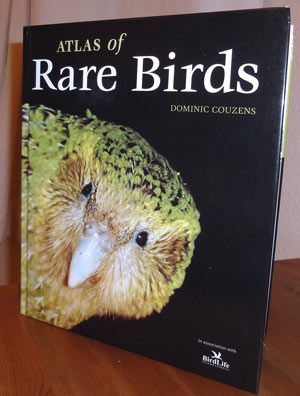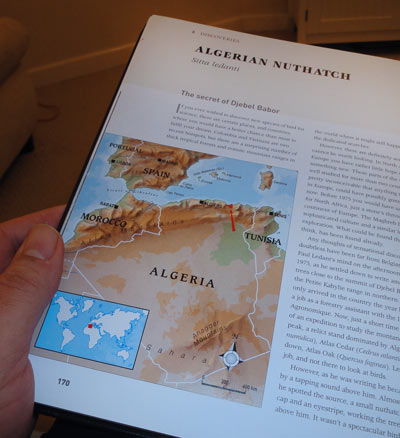Book review: Atlas of Rare Birds
- Complaining about the Mainland - 17th August, 2024
- New island designation – is it just greenwash? - 26th April, 2024
- Police and Crime Commissioners – a solution or a problem? - 21st April, 2024
The Ranger is a keen patron of second-hand book shops. When I find one, my first port of call is invariably the natural history section.

Being familiar with many such shelves, one gets an idea for the sort of material that gets left upon them. Rare indeed are the nineteenth-century illustrated treatises on invertebrates that I seek out. However, by contrast most second-hand bookshops are groaning under the weight of thick, glossy coffee-table tomes about horses, dogs and most particularly birds. Yes, the big bird book is a genre littered with dismal failures, which can largely be characterised by the repeated efforts of publishers to promote a set of lovely and lavishly-reproduced photographs by engaging some hack to write a few token words to fill the white space around them. So it was with some interest that I received for review a copy of the ‘Atlas of Rare Birds’ by Dominic Couzens. Written alongside Birdlife International by an authoritative and well-known British birding writer, this was a book with potential. Was it really possible to combine a large-format book on birds with some worthwhile content? (Thinking of buying this book? Read on for an exclusive discount offer for Naturenet readers!) It only takes a cursory glance to see that this is no mere page-flicking book of photos. It also slightly belies its title, which might lead one to expect some big annotated maps. Well, maps there are, and good ones, but much more too. Couzens has crafted a compendium of illustrated essays on fifty selected birds which, in some way, fulfil the definition of ‘rare’. This takes in species that are almost certainly extinct – such as the Ivory-billed Woodpecker; right through to the superabundant Lesser Flamingo, which qualifies for the book apparently by the vulnerability of its habitat.

The book is divided into chapters which have a certain common theme, such as “Unexpected Calamities” or “Rediscoveries”, but these are little more than a convenient way to break the volume up. Each bird is taken as a case-study by itself, and each essay is a satisfying, well-researched and authoritative piece of work which not only tells an interesting story, but often leads to a compelling and insightful conclusion. The photographs illustrating each piece are necessarily of variable quality, and in some cases non-existent. This, however, adds to the authenticity of the work, and in sometimes gives a welcome excuse for an enjoyable painting. A book with this much information in it made me expect to see some footnotes, and maybe even the usual scientific references at the back. Couzens, however, has chosen not to go down that route. The text pages are not cluttered with insets and text boxes, giving a satisfyingly simple reading experience. This is a course of action that might be advisable for some other publications which apparently use references as a means to bolster their scientific credibility. Anyone with access to the internet these days can find more references than they could possibly ever want: references are probably only really useful in peer-reviewed journals, not as a type of literary affectation. In the back of the Atlas of Rare Birds indeed there is a bit of reference material, with a bibliography, index, and a list of birding books – which, rather weakly, turn out to all be by New Holland Publishers, the publishers of this book. But really, you won’t be spending long in this bit of the book. The body of it is far too good for you to fritter your time looking at reading lists.

It’s impossible not to recommend this big, well-produced book. It’s a satisfying artefact in itself: a good demonstration of the kind of publication that the electronic book will be unlikely ever to supplant. But beyond that it is an enjoyable read which stimulates thought as well as wonder. For these reasons, the Atlas of Rare Birds proves itself supremely unlikely ever to be found on the bottom shelf of any second-hand bookshop.
Atlas of Rare Birds By Dominic Couzens Price

It is wonderful to find a good natural history book or guide in a second hand bookstore, especially a book that is useful and interesting as this one.
I look for old wildlife, botany, geology books in second hand stores. The older books have better descriptions, great drawings, but little photography. Sometimes it is that “extra” description that will help me identify a plant that I’m trying to figure out.
Nice post. Thanks.